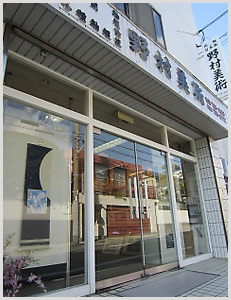Connecting the Tradition of Kakejiku to the Future: Restoration Request from a Customer in Germany
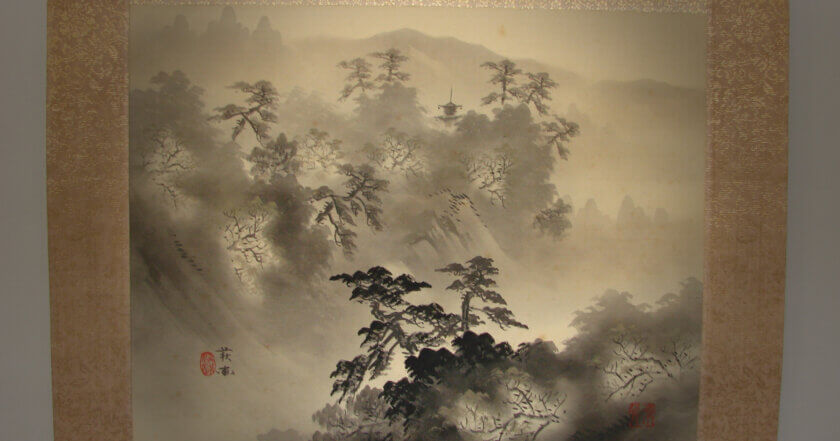
Contents
- 1 Bringing Traditional Kakejiku into the Future: A Restoration Request from Germany
- 2 Consultation on Restoration and Remounting
- 3 Seeking the Best Finish: Detailed Discussions
- 4 Final Adjustments and Decision
- 5 Completion of the Remounting and Shipping Preparation
- 6 Creating Kakejiku Together with Our Customers
Bringing Traditional Kakejiku into the Future: A Restoration Request from Germany
Japanese kakejiku (hanging scrolls) are cherished by art enthusiasts worldwide.
Recently, we received a request from a customer in Germany to restore and remount a kakejiku that had been deeply treasured for years.
Having previously purchased a kakejiku from our company and being satisfied with its quality, the customer decided to entrust us with this restoration project—a privilege we deeply appreciate.
Consultation on Restoration and Remounting
The kakejiku the customer owned showed signs of wear due to aging, including visible stains.

The customer wished to retain as much of the original aesthetic as possible while enhancing its beauty with a new mounting.
In particular, he expressed a preference for fabric that would maintain the original impression but with a more subdued appearance.
Seeking the Best Finish: Detailed Discussions
The choice of fabric significantly influences the final appearance of a remounted kakejiku.
Therefore, we proposed multiple options, explaining the characteristics of each and comparing their colors and textures.
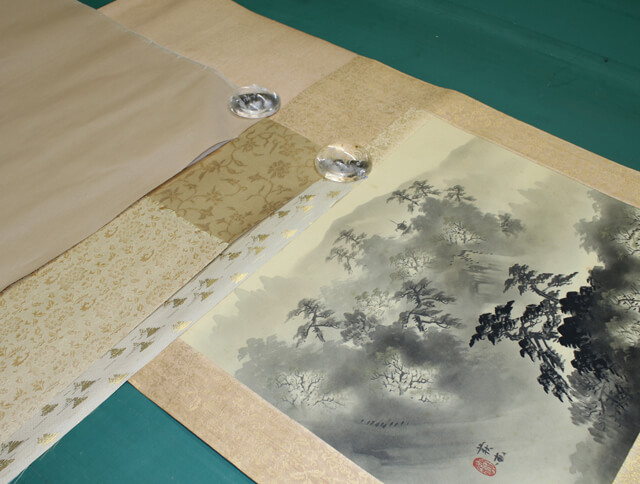
The customer preferred a gold brocade fabric but also valued balance in the overall design.
To accommodate this, we introduced additional fabric options and continued detailed discussions to find the best combination.
Through shared images and ongoing exchanges, we carefully worked together to ensure each decision was satisfactory.
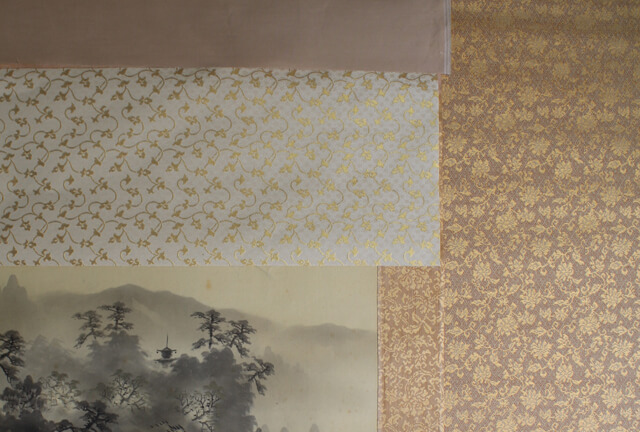
Final Adjustments and Decision
The decorative section of the kakejiku, known as “ichimonji,” was also carefully selected based on the customer’s preferences. While we initially suggested a slightly brighter fabric, we ultimately settled on a combination that preserved the original ambiance while making it suitable for the new mounting.
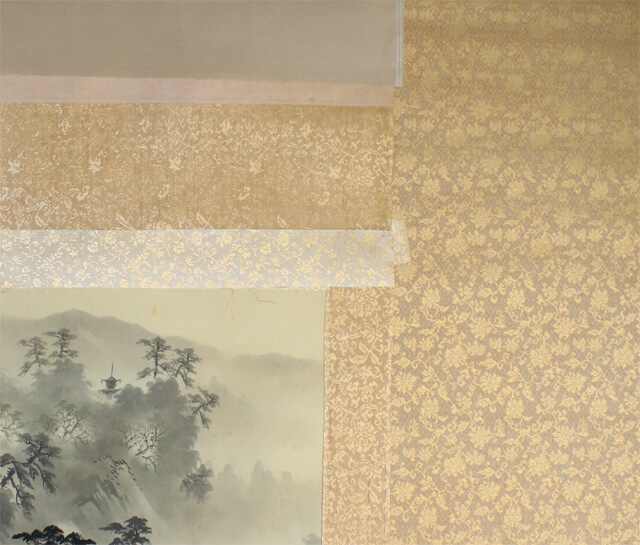
Additionally, we reviewed the roller ends of the kakejiku and decided to replace them with new ones to ensure durability.
Completion of the Remounting and Shipping Preparation
The remounting process was successfully completed, and we sent a photo of the finished kakejiku to the customer.

We were delighted to receive their response: “The scroll looks great, I look forward to receiving it and admiring your work in person soon!”
Ensuring that traditional Japanese craftsmanship reaches customers worldwide is something we take great pride in.
Creating Kakejiku Together with Our Customers
Restoring and remounting a kakejiku is not just about renewing an old piece—it is a collaborative process to achieve the best possible outcome.
This project reaffirmed the importance of careful communication and mutual understanding, even when working with customers overseas.
We remain committed to sharing the beauty of traditional Japanese kakejiku with enthusiasts around the world, preserving this cherished art form for future generations.

